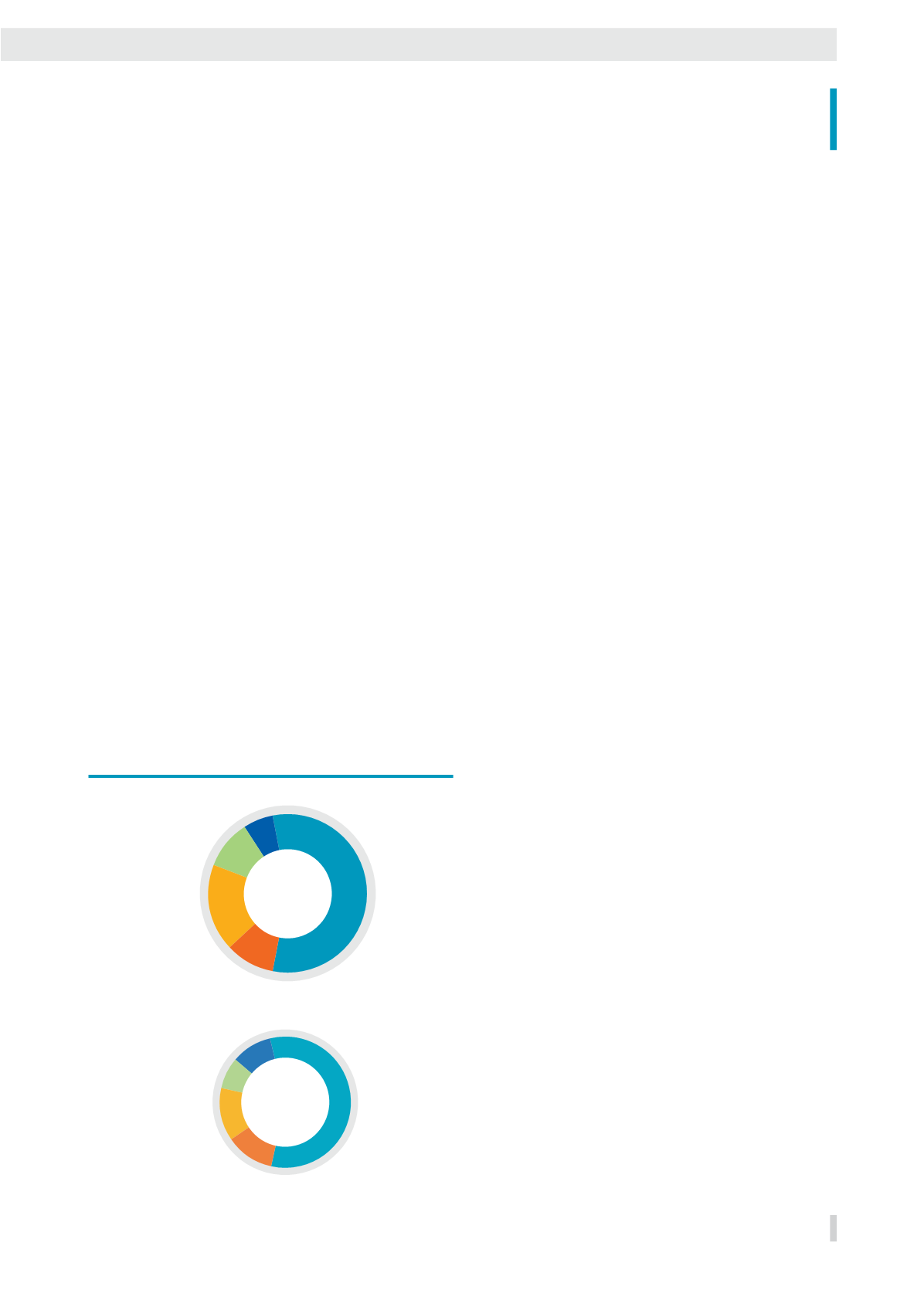
Operations and Financial Review
2014
Tankers
10%
Chemical Ships
8%
Container Ships
13%
Others
12%
Bulk Carriers
57%
2015
Tankers
6%
Chemical Ships
10%
Container Ships
18%
Others
10%
Bulk Carriers
56%
TYPES OF VESSELS REPAIRED IN FY2015
BY NUMBER OF VESSELS
Also in October, COSCO Dalian won an order to
construct a 22,000 DWT product oil tanker. This vessel
will be the second 22,000 DWT tanker to be built by
COSCO Dalian. The tanker will measure 155 metres
LOA, 36 metres in breadth and 12.5 metres in depth. It
will be equipped with dual engines, dual propellers and
will be able to transfer crude oil and fill oil both in port
and open sea.
SHIP REPAIR AND CONVERSION
Our shipyards started out doing traditional ship repair
works. Over the years through constant technological
improvements and upgrading of our capability, we
are able to capitalise on opportunities in the higher-
end repair and conversion market that calls for higher
levels of sophistication and capabilities in servicing
larger sized and other specialised vessels. In 2015, we
completed over 700 ship repair projects across major
vessel types. We also completed floating production,
storage and offloading (FPSO) conversions, oil tanker-
to-semi-submersible barge conversion, and container
ship bulbous bow conversion among others.
In April 2015, COSCO Dalian secured a contract from
MODEC Offshore Production Systems (Singapore) to
convert a very large crude carrier (VLCC) into a FPSO
unit. The unit is due for delivery in the second half of
2016 and will be deployed for operations at Tartaruga
Verde and Tartaruga Mestiça fields in Brazil. The ABS-
classed unit will be equipped with a spread mooring
system and will be capable of processing 160,000
barrels of crude oil per day.
DRY BULK SHIPPING AND OTHERS
COSCO has an entrenched presence in the dry bulk
shipping business. Our fleet of 10 Panamax and
Handymax vessels with a total capacity of 550,900
DWT plies global trade routes, transporting bulk cargoes
such as iron ore, coal, steel, cement and fertiliser to
major ports worldwide. Some of these dry bulk carriers
are chartered out to other ship owners and operators,
and serve our large client base of shipping companies
from Germany, Norway, Denmark, Greece, Switzerland,
UK, USA and others.
The Baltic Dry Index (BDI), a key measure of shipping
costs for commodities, averaged 718 points in 2015, a
decrease of 35.0%, year-on-year. The Baltic Exchange
Handysize Index (BHSI) averaged366points, a decrease
of 30.2% over the year. Meanwhile, the Baltic Exchange
Supramax Index (BSI) averaged 666 points, which was
a 29.1% decrease compared with 2014. In line with
the languid global shipping market, the turnover from
our dry bulk shipping and other businesses declined
by 25.1% from $52.5 million in 2014 to $39.4 million in
2015 as a result of persistently weak global demand for
commodities prices and tonnage surplus overhang in
the global dry bulk fleet capacity.
Without a doubt, the core markets that we operate
in were fraught with many difficulties in 2015. In
2016, improving cost control, streamlining production
efficiency, augmenting risk management and winning
orders will remain at the top of the agenda. The Group
will continue to exercise prudence and vigilance in
managing our resources, with close watch on the
changing market demands.
DRY BULK SHIPPING
AND OTHERS
27
COSCO Corporation (Singapore) Limited
Annual Report 2015


